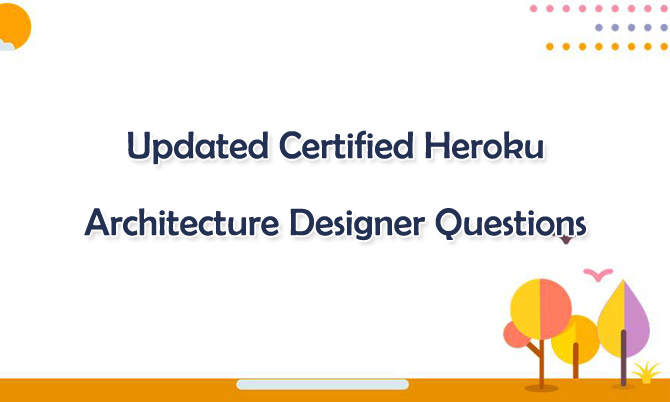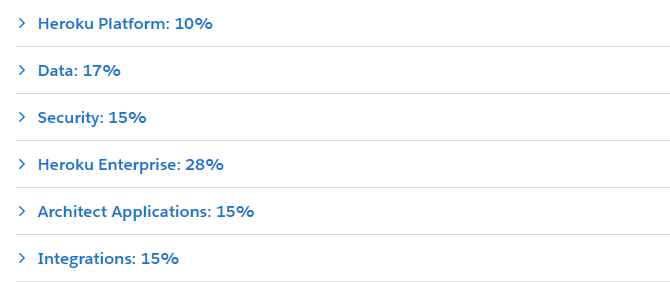Certified Heroku Architecture Designer real exam questions have been updated, which will be helpful for you to clear the test. Salesforce Certified Heroku Architecture Designer certification is designed for individuals who have the knowledge, skills, and extensive experience with architecting scalable solutions, deploying and managing apps, and managing teams and build-workflows on Heroku—specifically, Heroku Enterprise. To prepare Certified Heroku Architecture Designer exam, the official information and topics are helpful in the preparation.
The Salesforce Certified Heroku Architecture Designer exam is intended for an individual who has architectural knowledge of the Heroku platform and its capabilities.
The Salesforce Certified Heroku Architecture Designer exam measures your knowledge and skills related to the following objectives.
The updated Salesforce Certified Heroku Architecture Designer real exam questions can help you test the above topics. With all of the updated Certified Heroku Architecture Designer real exam questions and answers, you can pass the test easily. Share some updated Certified Heroku Architecure Designer real exam questions and answers below.
1.Which three resources can be found in the Heroku Elements Marketplace? (Choose three.)
A. Heroku Buttons
B. Buildpacks
C. Heroku Stacks
D. Docker image files
E. Add-ons
Answer: ABE
2.A client is planning to deploy an application to Heroku. The client's IT department requires all applications to be hosted from Australia, where their main office is located. Regulators in Australia require keystroke logs of all engineers who create interactive sessions for the application. Which should an Architect recommend in this scenario?
A. Deploy the application to a Private Space in the Sydney region with Private Space Logging enabled.
B. Deploy the application to the Common Runtime in the Sydney region.
C. Deploy the application to a Shield Private Space in the Sydney region.
D. Deploy the application to a Private Space in the Sydney region with Internal Routing enabled.
Answer: C
3.Which two statements describe characteristics of Private Space Logging? (Choose two.)
A. Log entries are forwarded as HTTPS POST requests.
B. Log entries are collated and forwarded by Heroku's Logplex router.
C. Log entries can be forwarded to up to three logging services.
D. Log entries can be forwarded to only one logging service.
Answer: AC
4.A client wants to migrate their on-premise application to Heroku. The application maintains a local, in-memory cache for its data store to improve performance.What should an Architect advise the client about running the application on Heroku?
A. The application should declare its in-memory cache as a separate process type to preserve it across deploys.
B. All of the application's web dynos will share a single in-memory cache.
C. The application should replicate its in-memory cache to a local disk to preserve it across deploys.
D. The application's in-memory cache might be cleared at any time.
Answer: A
5.Which two conventions of the Heroku platform reflect the Twelve-Factor methodology's recommendation to "execute the app as one or more stateless processes?" (Choose two.)
A. Log messages from each of an app's dynos are kept separate from each other.
B. Heroku apps define process types in a Procfile.
C. A Heroku app's config vars are deleted on deploys and app restarts.
D. Dynos have an ephemeral filesystem.
Answer: BC

